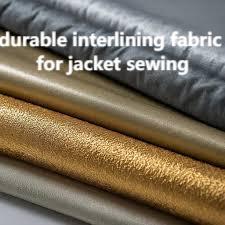In the evolving world of fashion, Interlining materials have become a cornerstone of garment construction. Using Interlining in modern apparel allows designers to maintain shape, durability, and comfort across a wide range of clothing types. By carefully selecting high-quality materials, manufacturers ensure garments are not only visually appealing but also structurally sound, providing both flexibility and support where needed. The impact of these internal layers goes beyond aesthetics, influencing wearability, fit, and long-term performance.
Enhancing Garment Durability
Quality internal layers strengthen clothing, especially in areas that undergo frequent stress like collars, cuffs, and seams. This reinforcement reduces deformation and prolongs garment life, ensuring customers enjoy their purchases longer. Durability in clothing is increasingly valued as consumers look for sustainable options that resist wear and tear.
Maintaining Comfortable Fit
Balancing structure with comfort is critical. Thoughtful integration of supportive layers allows garments to retain their shape without restricting movement. Stretch fabrics, blended fibers, and ergonomic designs work together to deliver comfort and flexibility. This ensures that fashion pieces perform well during daily wear while keeping a refined silhouette.
Innovative Material Options
Today's garment industry benefits from a variety of material choices. Lightweight foams, woven fabrics, and thermal-friendly inserts can be strategically placed to enhance both style and function. Material innovation supports creative freedom for designers while maintaining high standards of performance and finish.
Eco-Conscious Design Practices
Sustainability has become a key factor in fashion production. Many internal materials now utilize recycled fibers, biodegradable adhesives, and energy-efficient manufacturing processes. These practices minimize environmental impact while upholding product quality, aligning with growing consumer demand for responsible and eco-friendly fashion.
Future of Apparel Innovation
Advancements in textile science continue to reshape the way garments are constructed. By integrating structured internal supports intelligently, brands can offer premium products that meet aesthetic, functional, and sustainability standards. The careful choice of internal layering materials ensures garments remain both attractive and practical for modern lifestyles.
Ultimately, strategic incorporation of internal supports ensures durability, comfort, and sophisticated design. For more information, visit https://www.interlining-factory.com/news/what-is-interlining-types-applications-and-more.html

